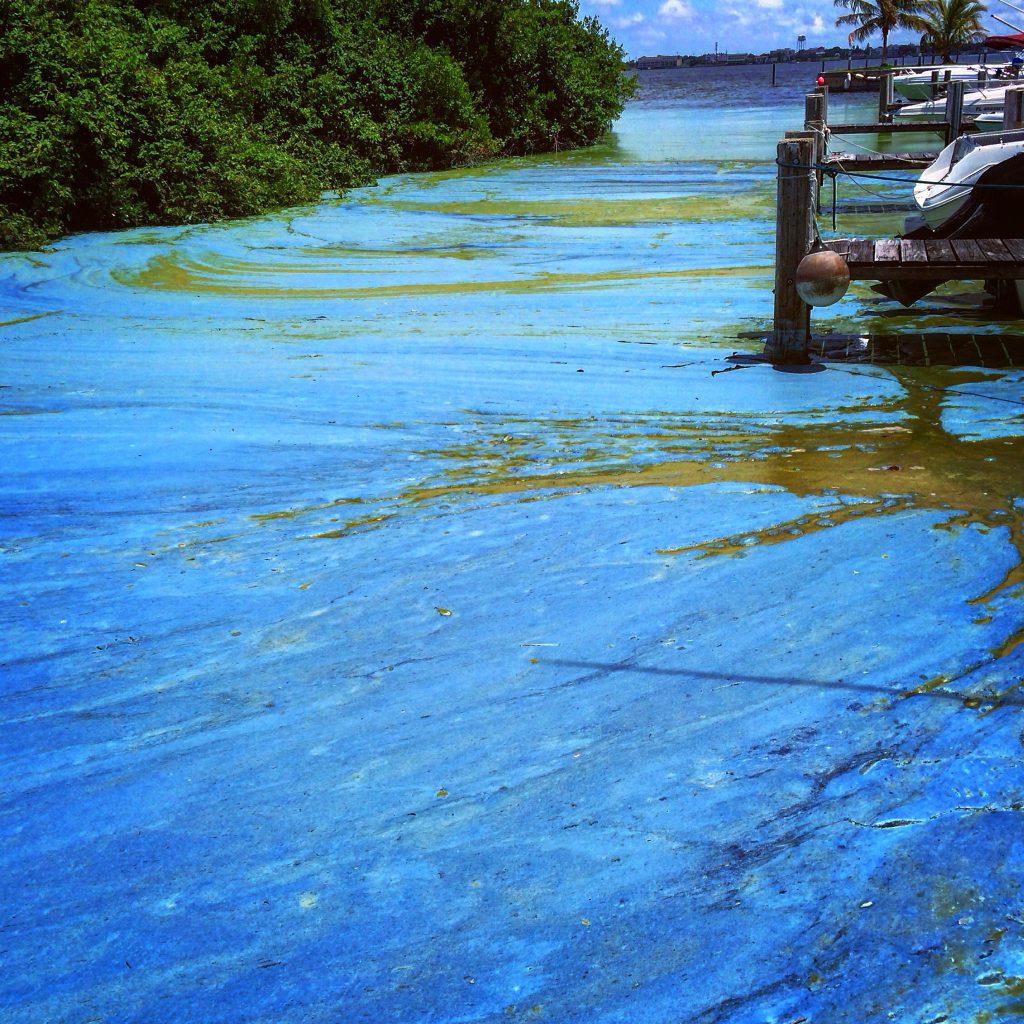The discharging of polluted water that began early this year from Lake Okeechobee into the surrounding estuaries is finally slowing. An unusually rainy dry season, in combination with the long delay in fully implementing the Comprehensive Everglades Restoration Plan (which includes purchasing land south of Lake Okeechobee), resulted in the Army Corps of Engineers discharging massive amounts of fresh water into the St. Lucie and Caloosahatchee Rivers in an effort to alleviate the strain on the Herbert Hoover Dike that surrounds the lake, a dike considered to be at high-risk of failure.
Now that Lake Okeechobee’s waters have subsided to safer levels, the discharges to the east have been stopped and discharges to the west have been slowed to a relative trickle compared to the hundreds of billions of gallons that had been dumped out since January.
Despite the good news, it is not the time for complacency. The past year has seen catastrophic algae blooms, fish kills, the death of manatees, dolphins, and other mammals, and water that was at times too dangerous for humans to go anywhere near. It has negatively affected businesses across the state–from fishermen, to stores and restaurants and real estate companies–and has dramatically affected the quality of life for thousands. We cannot get back the lost dollars, dead fish and animals and we cannot undo the impact that has already been done to the environment. But we can take steps now to prevent this from happening in the future and stop the problem from becoming even worse.
This is a crisis that has been decades in the making, and the solutions have been clearly outlined. Over halfway into the 30-year Comprehensive Everglades Restoration Project (CERP), progress has been slow. The most pressing need—the purchase of U.S. Sugar land to create reservoirs to store and clean freshwater south of Lake Okeechobee—has stalled, despite the passage of the 2014 Water and Land Conservation Amendment by the majority of Florida voters that should have enabled just that. The South Florida Water Management District voted to use the funds elsewhere, and U.S. Sugar has since expressed unwillingness to sell the land they had previously agreed to sell.
207 Everglades scientists agree that this is the best solution to the crisis. Thousands of individuals, conservation organizations and companies from around Florida and around the world have signed the Now or Neverglades Declaration, affirming their support for the plan. And Florida’s Senate President-elect Joe Negron indicated in August that he will seek state approval for a $2.4 billion plan to do just that.
We may see a temporary halt to the water crisis as the discharges slow. The obvious signs—the floating dead fish, the psychedelic blue-green algae—will go away. The news media may lose interest, and many people probably will as well. But this is not the time to lose the momentum that has been gained in the past year. We need to press on and continue demanding solutions that will prevent these types of environmental catastrophes from ever happening again in the future. It is our responsibility to the state of Florida, our environment and the generations that come after us.
Visit www.btt.org/fixourwater to learn more and make your voice heard.




